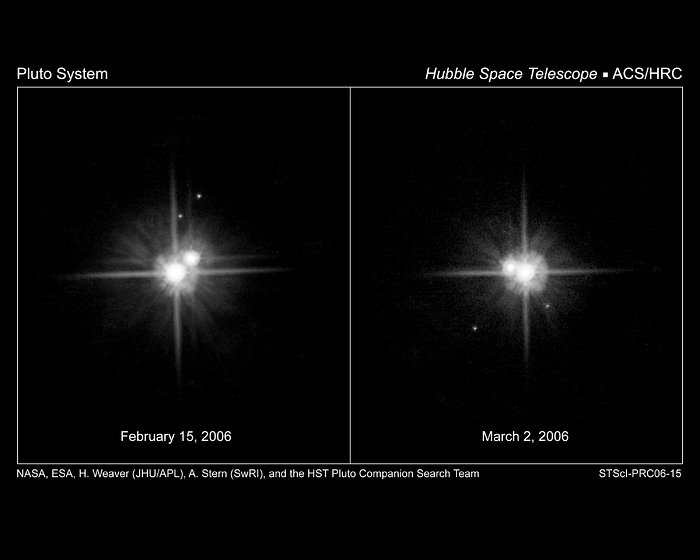Hubble's latest look at Pluto's moons supports a common birth
This pair of NASA/ESA Hubble Space Telescope images shows the motion of Pluto's satellites between February 15th and March 2nd, 2006. Both images were taken through a red filter (F606W) using the High Resolution Channel (HRC) of the Advanced Camera for Surveys (ACS). During this 15-day period, Pluto's newly-discovered satellite S/2005 P 2 (P2 for short) moved counterclockwise from the noon position to the 5 o'clock position, while the other newly-discovered satellite S/2005 P 1 (P1 for short) moved counterclockwise from the 1 o'clock position to the 7 o'clock position. During that same period, Pluto's much larger and closer moon, Charon, started near the 2 o'clock position, made more than two complete counterclockwise revolutions around Pluto, and ended up near the 10 o'clock position. The motions of P1 and P2 are in excellent agreement with the predicted motions based on earlier Hubble observations, thereby confirming that P1 and P2 are orbiting Pluto in the same plane as Charon's orbit, as expected if all three moons were created during a single, giant impact event.
Credit:About the Image
About the Object
| Name: | Charon, Hydra, Nix, Pluto |
| Type: | Solar System : Planet : Satellite Solar System : Interplanetary Body : Dwarf planet |
| Category: | Solar System |
Colours & filters
| Band | Wavelength | Telescope |
|---|---|---|
| Optical B | 435 nm |
Hubble Space Telescope
ACS |
| Optical V | 606 nm |
Hubble Space Telescope
ACS |
